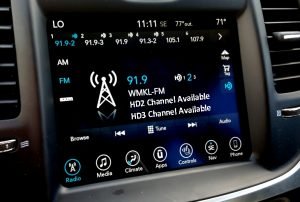
Here’s an update on a story we reported to you a few weeks back. As we stated, the FCC Notice of Proposed Rulemaking allowing AM broadcasters the option of transmitting an all-digital signal on an involuntary basis has been formally adopted as Dockets 19-311 & 13-249. The docket is soliciting input & comments on this proposal for the next 60 days, with replies to comments open to 90 days. At least two national broadcasting websites have erroneously reported this proposal as a done deal. However, this has NOT been enacted into law yet, but is expected to do so. Therefore, other websites may be incorrectly informing readers this has been passed into law. Among comments on the FCC site so far are concerns that analog radio listeners will no longer be able to listen to all-digital broadcasts. Concern is also expressed abut the need for consumers to purchase new radios to listen to all-digital AM & the sidebar issue of landfills & recycle centers overflowing with obsolete radio receivers. There is also concern that AM night time coverage ability to provide emergency, “Red” & “Amber” alerts may be hampered as many listeners will not be able to receive all-digital transmissions. This reporter predicts that the all-digital solution may work for some broadcasters – particularly in large urban areas such as ours, where there are plenty of choices on both AM & FM. The high cost of conversion of transmission equipment on the nearly obsolete AM band will make many broadcasters, particularly in small to medium markets hesitant considering the loss of existing analog radio listeners to their stations. The few AM broadcasters I’ve spoken with all feel they are getting more mileage out of their recently added FM translators, than the risky investment in all digital AM broadcast equipment. There appears to be absolutely no appetite by consumers to spend money purchasing home receivers to listen to either FM or AM HD radio & this isn’t likely to change.

Purchase of HD home radio receivers is flat & there are now only a few home receivers one can purchase due to lack of interest by consumers. The biggest gains for broadcasters choosing to adopt all-digital AM transmission are supported by owners of newer vehicles. InsideRadio recently provided some supportive statistics to encourage would-be all-digital broadcasters regarding HD radio penetration in the new vehicle market: “40 automotive brands are shipping vehicles in North America equipped with HD Radio technology—and more than 50 million HD Radio receivers are on the road, 18% of all cars on the road. The number of vehicle models featuring HD Radio either standard or optional in a feature package: 263; total vehicle models offering HD Radio as standard: 163 (62% of all HD-equipped vehicles). More than half (52%) of all new cars sold in 2018 came with factory-installed HD Radio receivers. And for fun: An HD Radio-equipped car is sold every three seconds in the U.S. On FM stations with HD transmissions, 234 stations are simulcasting co-owned AM stations on an HD2, HD3 or HD4 channel. And here’s how those stats actually matter, Xperi offers: 79% of U.S. radio listeners tune to stations broadcasting with HD Radio technology every week; the weekly cume of HD2-HD3-HD4 channels alone is well over nine million; and there are more than 161 million hours of in-car listening to HD Radio stations weekly in the U.S., based on the Nielsen Nationwide NRD database, Spring 2018.” This makes mobile listeners the number #1 target for AM broadcasters choosing to abandon their existing analog listeners to pursue an all digital transmission strategy.

Here in the Seattle-Tacoma-Everett market, Andy Skotdahl’s classic country 1520 KKXA previously broadcast a digital-only signal as part of the ongoing tests to evaluate technical criteria & signal propagation & results were positive. I would predict that it’s likely both KKXA & co-owned classic hits 1380 KRKO will be the first local signals to switch to all digital. My gut feeling is that this proposed evolution of AM broadcast technology may be too little too late & possibly beyond the financial means of a number of AM broadcasters due to the investment required versus the return, plus the predicted loss of existing listeners. All-digital AM transmission COULD be a successful niche for the large corporate broadcasters willing to convert at least one of their urban AM sticks. It could also give the edge to urban “indie” owners such as Andy Skotdahl to corner commuters & in-car listening. The biggest winners would appear to be the FCC, ever determined at self-preservation of their jobs &mandate, also Xperi & the manufacturers of HD transmission equipment. The need for detailed engineering requirements to properly implement HD AM transmission could encourage youthful entry into a profession that’s losing many to retirement. With so few stations willing to maintain engineering staff, some consider it a dying profession, and HD AM construction could provide employment opportunities that don’t currently exist.


Some comments may be held for moderation. (New users)